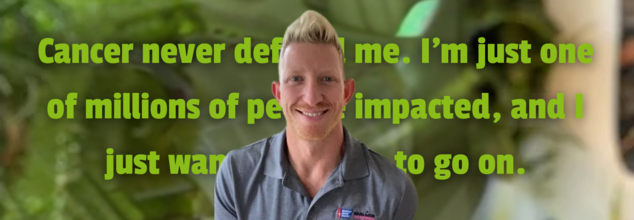- Health Conditions A-Z
- Health & Wellness
- Nutrition
- Fitness
- Health News
- Ayurveda
- Videos
- Medicine A-Z
- Parenting
- Web Stories
Sugar And Sweeteners Linked To Early Puberty In Kids: Study

(Credit-Canva)
Puberty is a natural phase in a child’s life when their bodies begin to develop into an adult. It is the transitionary stage in life, and the average age to start puberty for girls being 11 and for boys 12. The National Health Services UK explains that it is normal to begin puberty at any point between 8-13 in girls and 9-14 in boys. If it is later than the average age, there isn’t much to worry about. However, if it starts earlier then it is best to consult a doctor.
While there are no clear causes of early puberty, according to the NHS it could be triggered by a brain tumor in some cases, a genetic disorder, or it could be due to issues with ovaries and thyroid glands as well.
A new study hints that eating lots of sugar and fake sugars (called artificial sweeteners) might make kids go through puberty sooner than usual. This is especially true for children who already have certain genes that make them more likely to experience early puberty. Researchers presented these findings at the Endocrine Society's annual meeting in San Francisco.
Key Sweeteners Implicated
The study pointed fingers at several common sweeteners. These include regular sugar, the artificial sweetener aspartame, sucralose, and glycyrrhizin which is found in licorice root. All of these were strongly connected to a higher chance of early puberty. The more of these sweeteners kids ate, the greater their risk of hitting puberty early. Think of it like this: a little bit might not do much, but a lot could really push things along.
Study Details and Findings
For this study, the researchers looked at information from over 1,400 teenagers in Taiwan. Out of these, 481 had a type of early puberty called central precocious puberty. Normally, girls start puberty between ages 8 and 13, and boys between 9 and 14. But with central precocious puberty, a child's brain sends out puberty signals too early, causing their body parts that make sex hormones (like ovaries in girls or testes in boys) to start working ahead of time.
Kids who go through puberty early might grow very fast at first, but then they stop growing sooner than other kids. This can lead to them being shorter adults. In the long run, they might also face higher risks of heart problems, some types of cancer, and type 2 diabetes.
To figure out how much sweetener the teens were consuming, the researchers used questionnaires (like surveys) and urine samples. They also checked the teens' genes to see if they had a higher chance of central precocious puberty.
Diet, Genes, and Development
One of the main points of the study is how what kids eat now – especially sweetened foods – might interact with their genes to influence when they start growing up. Earlier research also showed that some sweeteners can directly affect the body's hormones and the bacteria in the gut that play a role in puberty. For example, a certain artificial sweetener can trigger the release of puberty-related hormones, and the licorice root extract can change gut bacteria and affect genes involved in development. This all suggests that sweetened foods and drinks could have a surprisingly big impact on how children develop.
Different Effects on Boys and Girls
Interestingly, the study found that different sweeteners affected boys and girls in unique ways. One specific artificial sweetener was linked to earlier puberty more in boys, while licorice root extract, that same artificial sweetener, and plain added sugars showed a stronger link to earlier puberty in girls. This highlights that the effects of sweeteners can be different for male and female bodies.
These findings are important for families, doctors who treat children, and public health officials. The study suggests that if we know a child's genetic risk and help them reduce their intake of sweeteners, we might be able to prevent early puberty and its potential long-term health problems. This could lead to new guidelines on what children eat and drink to support healthier growth.
Not All Cancers Start Inside: The Case Of 'Forgotten Cancer' - What Makes Sarcoma Different From Other Forms Of Cancers

Credits: Canva
Every year, the month of July is marked as Sarcoma Awareness Month—a time when patients, caregivers, doctors, and advocates across the world come together to shine a light on this rare and often overlooked group of cancers.
In 2025, the global theme is “Know. Act. Advocate.” It urges people to understand the signs, respond to early symptoms, and support timely diagnosis and treatment.
Unlike most common cancers that begin in internal organs, sarcoma often starts in the bones and soft tissues. That’s why experts say not all cancers begin from within.
“Sarcoma is often called the ‘forgotten cancer’ because of its rarity and the lack of awareness around it,” says Dr. Sunil Chopade, Consultant, Medical Oncology at Jaslok Hospital, Mumbai.
What Is Soft Tissue Sarcoma?
Sarcomas are a rare form of cancer that can arise from a wide range of tissues—muscles, fat, blood vessels, nerves, and fibrous tissues. Based on their origin, they are categorized as bone sarcomas and soft tissue sarcomas.
“Soft tissue sarcomas are classified into nearly 100 types based on the cell of origin and genetic changes,” explains Dr. Chopade. “While they make up less than 1% of adult cancers, in children, they account for about 10–15%.”
Common types include Ewing’s sarcoma, osteogenic sarcoma, and rhabdomyosarcoma, especially in younger patients. These can occur in areas such as the extremities, chest wall, spine, or abdominal cavity.
When to Worry About a Lump
One of the earliest signs of sarcoma is a lump or swelling, but not all lumps are dangerous. So how do you tell the difference?
“Benign lumps like lipomas may stay the same size for years and are usually painless,” says Dr. Chopade. “But if the swelling is painful, growing in size, or limiting movement, it needs evaluation.”
He adds, “Unlike benign lumps, sarcomas can infiltrate surrounding tissues. If a lump persists or grows, don’t ignore it.”
Symptoms Depend on the Site
Symptoms of sarcoma can vary dramatically depending on where it develops. A tumor near the joints may limit movement, while one in the abdomen can cause pain, discomfort, or a feeling of fullness. Sarcomas near the spine may even lead to neurological issues.
Who Is at Risk?
Although sarcoma can strike without warning, some factors increase risk.
“Previous radiation exposure is a known cause,” Dr. Chopade says. “There are also genetic syndromes like Li-Fraumeni and retinoblastoma that are linked with sarcoma.”
As for lifestyle factors? “There is no evidence that any specific diet or supplement prevents sarcoma,” he clarifies.
Diagnosis and Why Early Detection Matters
Sarcoma diagnosis relies on imaging techniques such as MRI, CT, and PET-CT, followed by a biopsy to confirm the cancer type.
“Treatment typically includes a combination of surgery, chemotherapy, and radiation therapy,” Dr. Chopade says. “If detected early, sarcomas can be cured.”
Specialists to consult include medical oncologists, cancer surgeons, and orthopaedic oncologists, particularly those experienced in bone and soft tissue tumors.
Though immunotherapy has shown promise in many cancers, its application in soft tissue sarcomas is still under research, except in select cases.
The goal of Sarcoma Awareness Month is not just education, but empowerment. “Knowing the signs, acting on symptoms, and advocating for timely care can save lives,” stresses Dr. Chopade.
If you notice an unusual lump or persistent pain, don’t wait. Consult your doctor or oncologist. Early action can make all the difference.
Working 60-Hour Weeks Caused This Man To Almost Ignore A Bump That Turned Out To Be Cancer

Credit-American Cancer Society
CJ, a busy restaurant manager, was getting ready to turn 38. He worked 60-hour weeks and was planning a trip to Spain. In all that rush, he barely noticed a small, itchy bump on his thigh. He thought it was just a mosquito bite and didn't worry about it.
When a "Bite" Turns Dangerous
But this bump was different. It grew very quickly, and in just three months, it became a raised, half-inch lump that started to bleed. Even though he still believed it was harmless, the fast changes made CJ decide to see a skin doctor. The news was shocking: it was melanoma, a very serious type of skin cancer. CJ described it as "the fastest moving train I've ever seen." Within two weeks of that first appointment, he had scans and urgent surgery. The cancer, a serious Stage IIIB melanoma, had already spread to the lymph nodes in his groin.
Finding Strength Through a Tough Battle
CJ and his husband had to cancel their trip to Spain. Instead, CJ spent the week recovering from surgery. It was incredibly hard for him to go from a healthy person with what he thought was a simple bug bite to a cancer patient facing treatment so quickly.
Despite feeling down and depressed at first, CJ held onto his positive attitude, largely thanks to his husband's constant support. His husband was his "cheerleader," reminding him that everything would be okay.
CJ went through his treatment, which included several rounds of IV medication. After that, he had regular check-ups with ultrasounds and CT scans for five years to make sure the melanoma hadn't come back. He approached these appointments like a checklist. CJ shared that cancer never defined him; he just wanted to get on with his life.
Living Cancer-Free and Helping Others
Recently, CJ got the wonderful news that he's been cancer-free for five years. CJ advises anyone facing a new diagnosis to acknowledge their mental health and seek support. While he has great resilience, he found value in connecting with others who had similar experiences. That's why he now shares his story and volunteers to help other cancer patients, including working with campaigns like the American Cancer Society's Men Wear Pink.
Body Changes and Sun Protection
CJ's experience really highlights how crucial it is to pay attention to any changes in your body and see a doctor if something doesn't go away. What seemed like a minor irritation turned into a serious, life-threatening condition that needed immediate medical care.
His journey also serves as a strong reminder about protecting yourself from the sun. While anyone can get skin cancer, CJ's doctors believe his melanoma might be linked to a lot of sun exposure when he was younger. He knows that growing up in the 1980s meant less awareness about staying in the shade or using daily sunscreen. However, with his fair skin and red hair, studies show he was already at a much higher risk for skin cancer than people with darker hair and skin.
Today, CJ and his husband are new parents, and they make sure their son is protected from the sun every single day. Their son is "always the first one getting the sunscreen." CJ believes the choices we make daily affect our physical and mental health, and he wants to do everything he can to protect his son.
CJ now sees his cancer journey as a significant event that pushed him to make healthier choices, including better sun protection and a healthier diet. His career is now focused on fitness and nutrition, and he considers his past cancer experience just that – part of his past, thanks in part to the work of organizations like the American Cancer Society.
Common Tell-Tale Signs Of Prediabetes You Should Be Aware Of

(Credit-Canva)
Diabetes is one of the most common health issues that many people go through. It is a condition where one’s blood sugar is higher than normal. The World Health Organization explains that the number of people who have diabetes has increased from 200 million in 1990 to 830 million in 2022. The drastic increase in numbers has been attributed to the increase in the prevalence of processed and sugary foods, lack of movement due to long working hours, etc.
While it is a prevalent condition, it needs specific tests to be diagnosed. So, does a person develop diabetes with no prior signs or warnings? There is in fact a warning step before you get diagnosed with diabetes known as prediabetes.
Understanding Diabetes and Prediabetes
There are also 2 types of diabetes. Type 2 is the most common type, where your pancreas do not make enough insulin to breakdown the blood glucose. In type 1, a person’s pancreas stops working, causing high blood sugar levels.
However, before you develop type 2 diabetes, there is a ‘warning stage’ known as prediabetes.
Prediabetes, also called non-diabetic hyperglycaemia, means your blood sugar levels are higher than normal, but not high enough to be diagnosed as diabetes. It's a serious concern because it significantly increases your risk of developing type 2 diabetes, heart disease, and stroke.
Tell-Tales Signs of Prediabetes
By recognizing prediabetes and making changes to your daily life, you can significantly lower your risk of developing type 2 diabetes. This includes-
Feeling Tired
Experiencing unusual tiredness or frequent energy dips could be a subtle clue. When blood sugar levels aren't stable, your body struggles to use energy efficiently, leaving you feeling drained even after rest. This ongoing fatigue is a common early warning.
Blurry Vision
Occasional or persistent blurry vision might indicate fluctuating blood sugar levels. High sugar can affect the fluid balance in your eyes, causing the lens to swell and change shape, leading to temporary or recurring fuzziness in your sight.
Increased Hunger
Feeling hungry more often than normal, even after eating, is a symptom known as polyphagia. If your body isn't effectively using glucose for energy, your cells might signal a constant need for more fuel, leading to persistent hunger pangs.
Unexplained Weight Loss
Losing weight without trying, even when you're eating more, can be a surprising early sign. This happens because your body might not be getting enough energy from glucose, causing it to start burning fat and muscle for fuel instead, leading to unintended weight loss.
Darkened Skin Patches
You might notice areas of darkened, velvety skin, especially around your neck, armpits, or groin. This condition, called acanthosis nigricans, is a common visual sign of insulin resistance, where your body isn't using insulin effectively.
Skin Tags
While generally harmless, having an unusual number of small skin growths, or skin tags, can sometimes be linked to higher insulin levels and insulin resistance. They often appear in areas where skin rubs together, like the neck or armpits.
Slow-Healing Wounds
If your cuts, scrapes, or wounds take an unusually long time to heal, it could be a warning sign. High blood sugar levels can damage nerves and blood vessels, reducing blood flow and the body's ability to repair itself efficiently.
Increased Thirst and Frequent Urination
Feeling unusually thirsty all the time and needing to urinate much more often, especially at night, are classic signs. When blood sugar is too high, your kidneys work overtime to filter out the excess sugar, pulling more water from your body and making you thirsty.
Getting Diagnosed and Checked
The exact cause of prediabetes isn't fully clear, but your family history and genes play a significant role. The only definite way to know if you have it is through a blood test ordered by your doctor. In the UK, if you're aged 40-74, the NHS Health Check includes a diabetes risk assessment and you should be invited for this check-up every five years to help detect early signs.
© 2024 Bennett, Coleman & Company Limited

